What are some of the coolest things in space that you can think of?
For as long as there have been humans on Earth, we have been gazing up at the stars, discovering all manner of weird and wonderful things.
For about the first 90,000 years or so, we had to, because TV hadn’t been invented yet and there wasn’t anything else to look at.
Except bison and mammoths, and once you’ve drawn a few of those on your cave walls, what are you going to do?
Discover amazing facts about space and the things we still don't know about the Universe.

But even in this modern world of ours – with hundreds of TV channels and millions of hours of YouTube videos available at the touch of a button, when you can hear every song ever recorded and read any book that’s ever been written – we continue to be fascinated by space.
And that’s because the Universe is absolutely packed full of really cool stuff.
From awe-inspiring nebulae that wow us with their sheer beauty, to terrifying exoplanets where it rains glass, to mysteries such as dark matter and dark energy that, to this day, have the planet’s brightest minds completely stumped.
So sit back, buckle up and let us take you on a whirlwind tour of some of the coolest, most mind-boggling stuff that space has to offer…
Pulsars
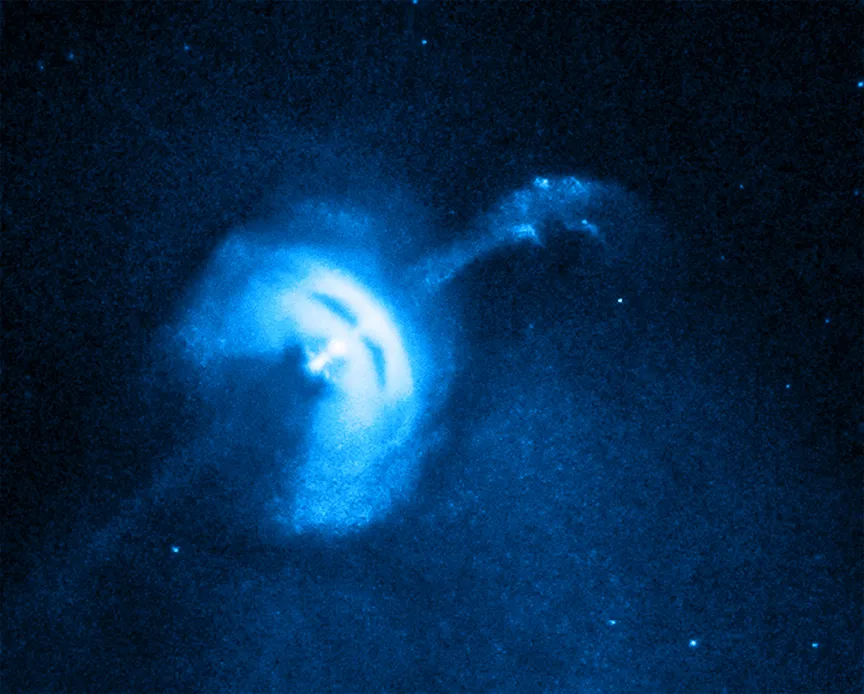
Like a sort of cosmic lighthouse beam, pulsars are the collapsed remnants of massive stars that spin incredibly fast and emit a flickering pulse of radio waves into space.
Pulsars are spinning neutron stars, and the first discovery of one was made by UK astronomer Jocelyn Bell Burnell in August 1967, when she was a graduate student.
The fastest known pulsar is PSR J1748-2446ad, which was discovered in November 2004.
This particular pulsar spins 43,000 times a minute and is located 20,000 lightyears from Earth.
The coldest place in the Universe

Let's take the idea of the coolest things in space literally for a moment and explore the Boomerang Nebula, the coldest known place in the Universe.
A cosmic cloud 5,000 lightyears from Earth, the Boomerang Nebula is even colder than the Cosmic Microwave Background, the background glow left over from the Big Bang (which is about -270°C and is often given as the average temperature of space).
The Boomerang Nebula is colder than space. We know of nothing colder.
A 1995 study by astronomers Raghvendra Sahai and Lars-Åke Nyman discovered its temperature to be -272°C, just 1°C warmer than absolute zero.
Gravitational waves
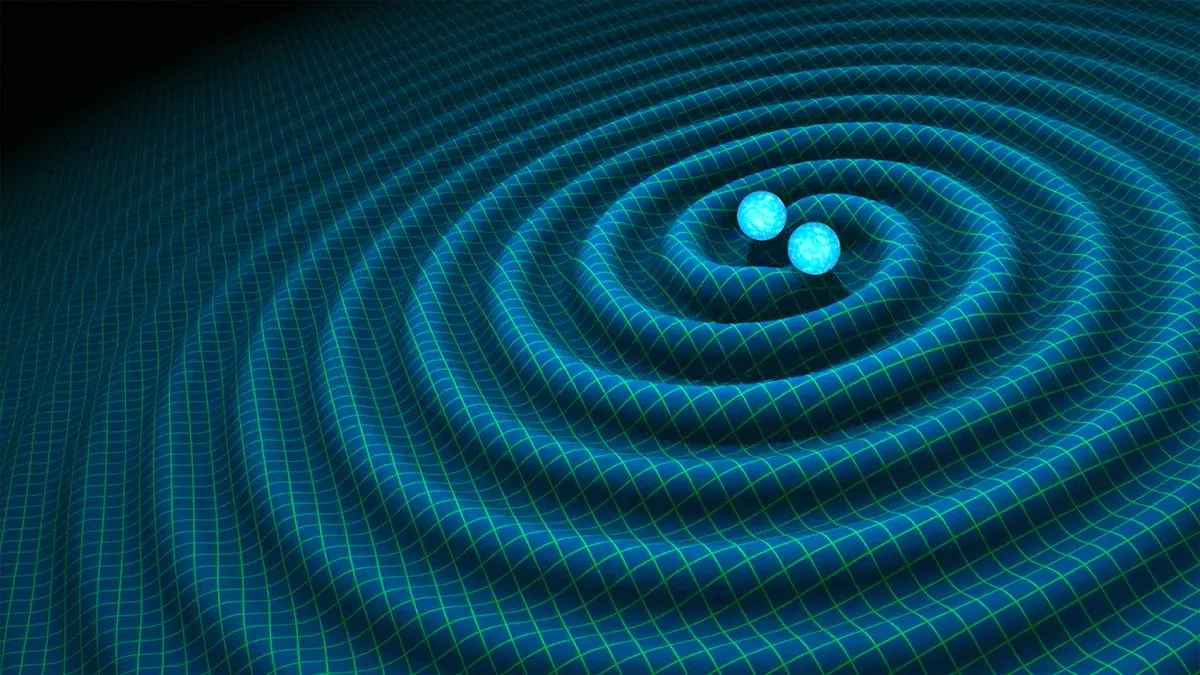
Gravitational waves are often referred to as 'ripples in spacetime'. How cool is that?
The 'waves' are the stretching and squeezing of spacetime and were predicted in Einstein's theory of general relativity in 1916, but only detected 100 years later.
The first direct observation of gravitational waves was achieved on 14 September 2015.
Einstein's theory says anything with mass exerts gravity, and gravity distorts the curvature of spacetime.
So even if you wave your arm around right now, you're creating gravitational waves; they're just far to weak to be detected.
But if two massive objects like black holes collide in space, this sends out ripples that can be detected using specialised equipment like the LIGO (Laser Interferometer Gravitational-Wave Observatory), a large-scale observatory that detects gravitational waves.
Oort cloud
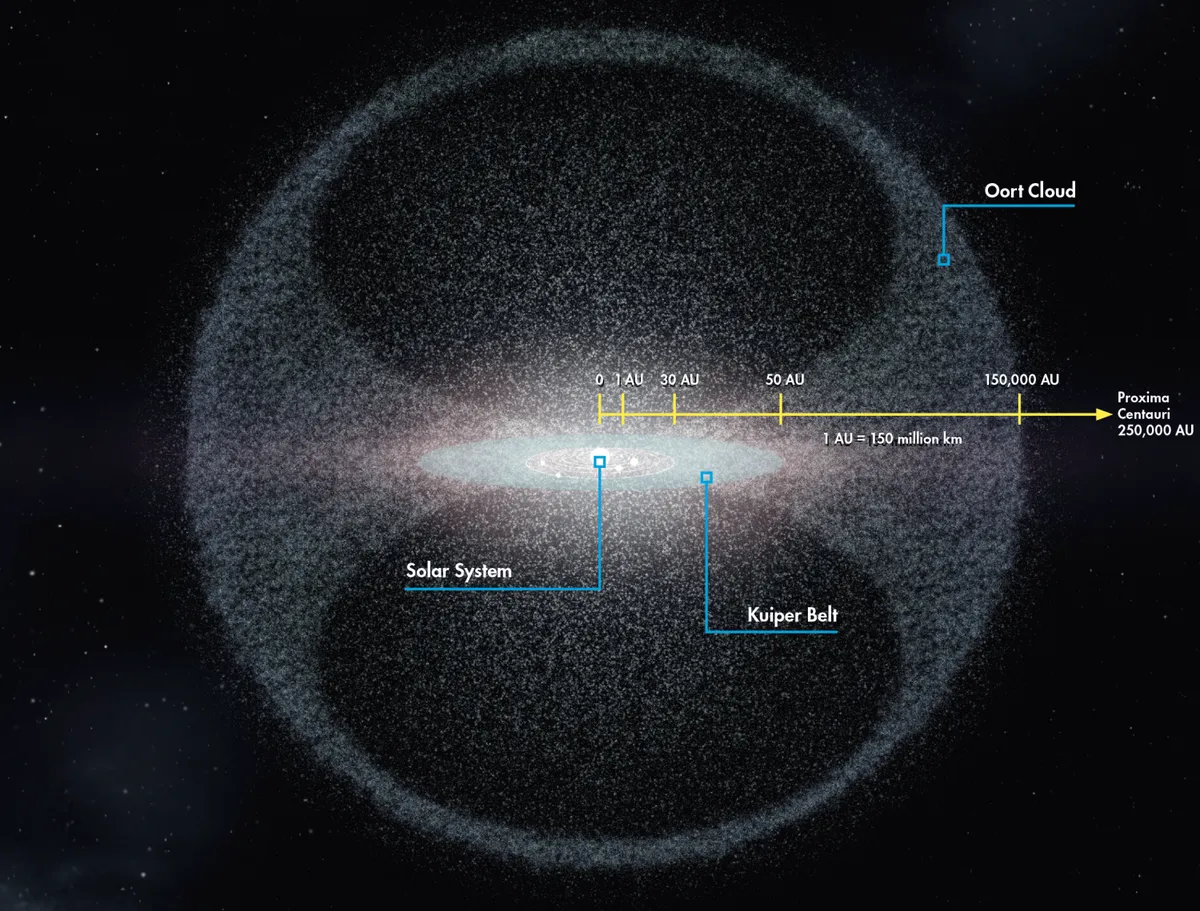
The Oort Cloud is an icy shell made up of billions - or even trillions of frozen bodies of water, ammonia and methane surrounding our Solar System.
This frozen bubble of sorts has never been directly observed, but was theorised by Jan Oort, a Dutch astronomer, in 1950.
The Oort cloud is thought to be a remnant of the formation of the Solar System, when the dusty debris disc surrounding our young Sun began to coalesce over time to form the planets and moons we see today.
Jan Oort suggested the existent of the Oort cloud to explain how there can comets with orbital periods of many thousands of years.
While actual measurment of the Oort cloud would be tricky to say the least, it's thought the Oort Cloud begins at about 1 lightyear’s distance from the Sun.
It could stretch up to a third of the distance to our next nearest star, Proxima Centauri.
Enceladus's plumes
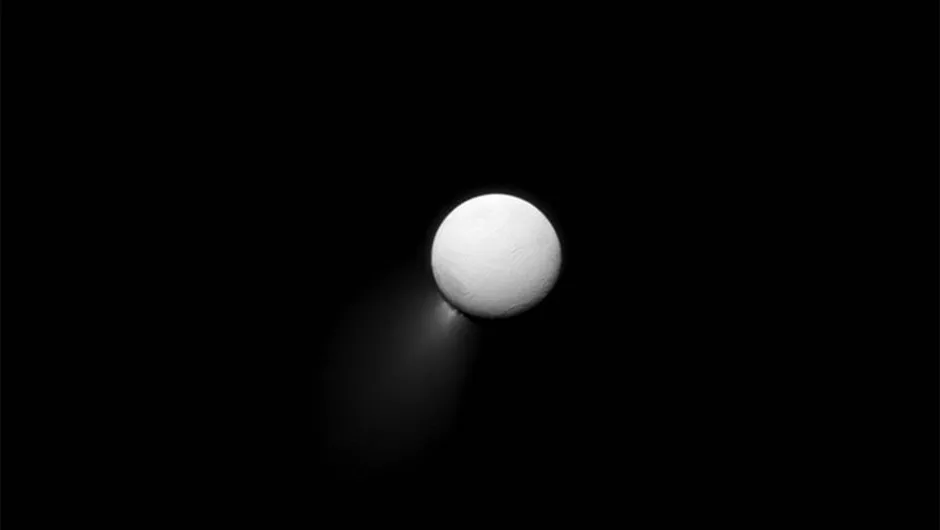
Water is an essential ingredient for life as we know it, so if we're interested in finding suitable conditions for life elsewhere in the Solar System, looking for liquid water is a good place to start.
This is why astronomers search for water beyond Earth, and is what makes the icy moons around Jupiter and Saturn such tantalising places for exploration.
Moons like Europa at Jupiter and Enceladus at Saturn are key places to search for signs of habitability because they have liquid oceans underneath their icy crusts.
Enceladus is even known to have plumes of water vapour that shoot outwards into space.
We know this because NASA's Cassini spacecraft flew conducted 'plume dives' at Enceladus towards the end of its mission exploring the Saturn system in 2015.
Subsequent study of data from the plume dives has revealed complex organic molecules at Enceladus, further increasing the likelihood that it could potentially support life.
Virgo Supercluster
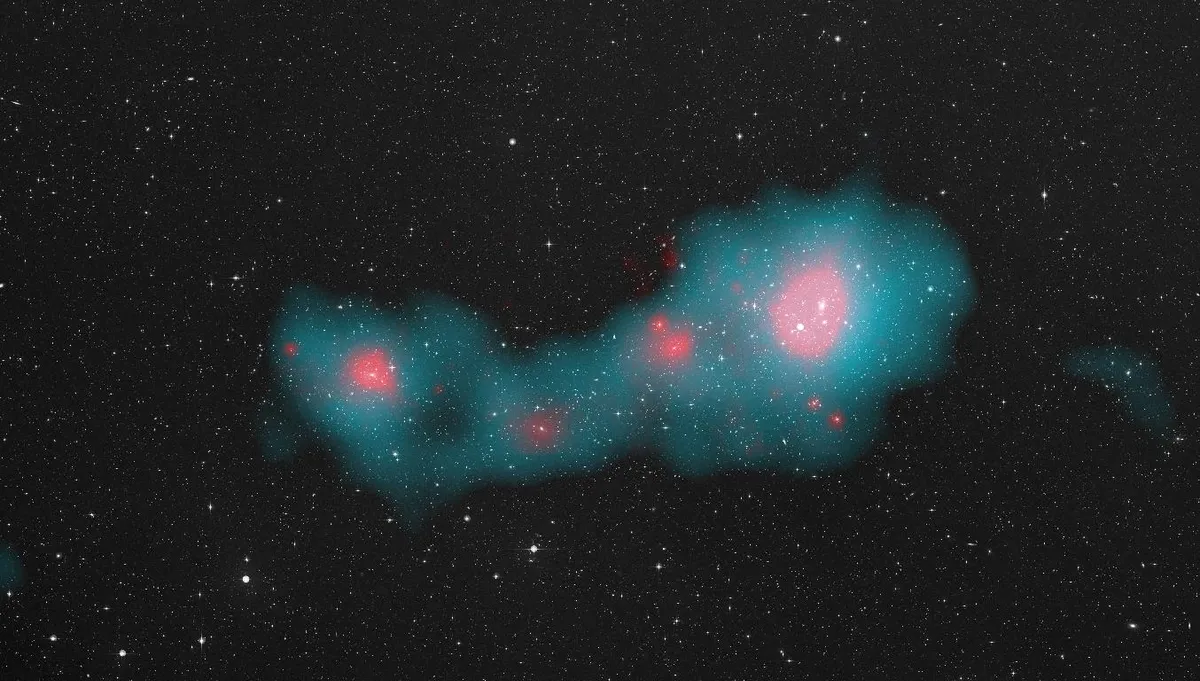
The Virgo Supercluster is part of our cosmic address, though you may not have heard of it before.
It's a huge body containing 100 galaxy clusters and galaxy groups, bound together by gravity, stretching about 110 million lightyears across.
Within it we find the Virgo Cluster and Local Group, the latter being our own group of galaxies.
But the Virgo Supercluster is about 7,000 times as big as the Local Group, and 100 billion times the size of the Milky Way.
Great Red Spot
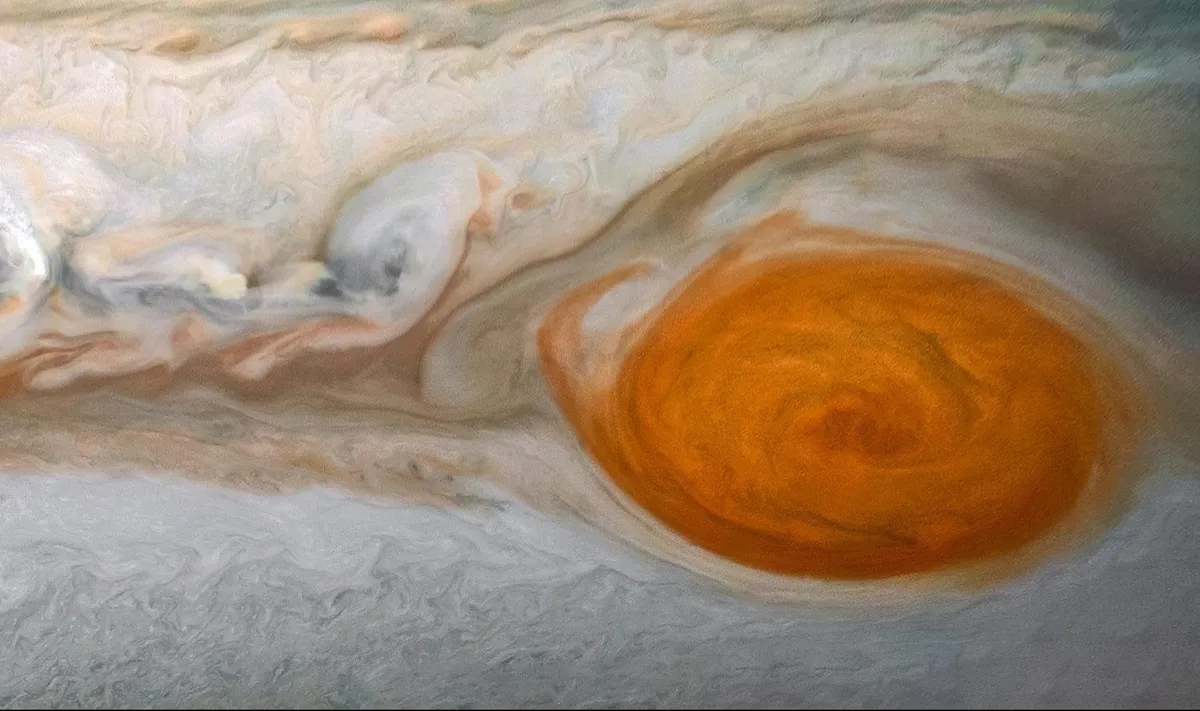
Image processing by Kevin M. Gill, © CC BY
Have you ever seen that huge red blob that appears on the stripy surface of planet Jupiter in Hubble Space Telescope images?
That's the Great Red Spot, a huge storm about 1.3 times as wide as planet Earth.
This giant storm boasts winds that can reach up to 680 kilometres per hour and was probably first spotted by astronomers in the 17th century.
More recently than that, in 2019 NASA's Juno space probe made two low flyovers of the Great Red Spot, allowing planetary scientists a close look at this incredible feature.
Fast Radio Bursts
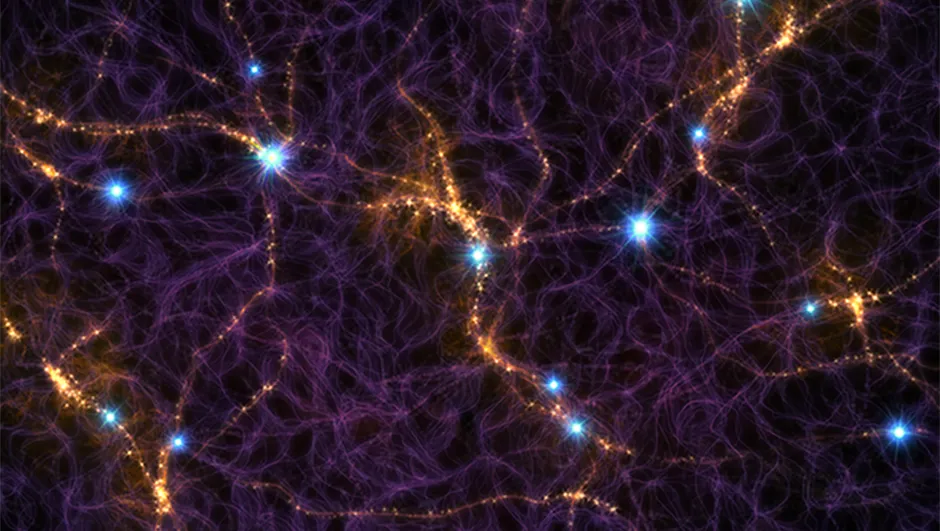
Fast radio bursts were first discovered in 2007, and so far astronomers have not been able to nail down exactly what they are.
From an observational perspective, fast radio bursts are sudden, intense flashes of radio waves that have been detected by telescopes around the world.
They last just milliseconds, but they are intensely bright, leading to suggestions they could be related to neutron stars or black holes.
Perhaps some sort catastrophic explosion such as an extreme supernova could be the explanation.
For now, the origin of fast radio bursts remains a mystery.
Supermassive black holes
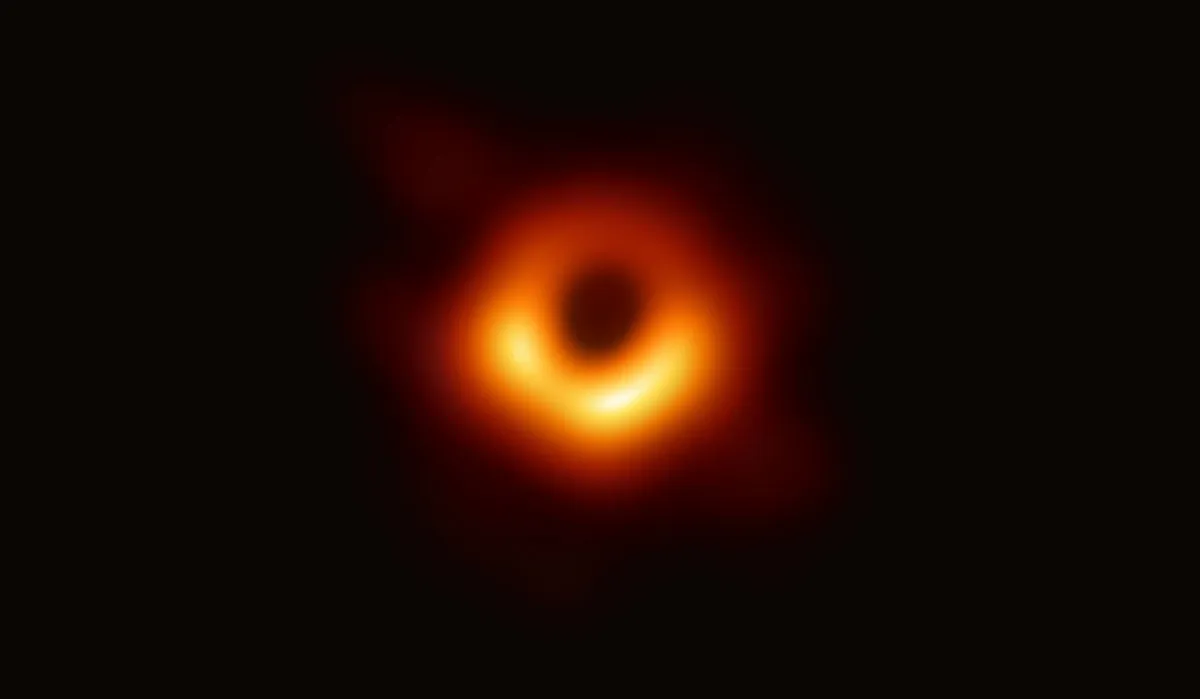
Astronomers calculate that most galaxies have a supermassive black hole at their centre.
That includes our own galaxy, the Milky Way. At its core lies supermassive black hole Sagittarius A* just a celestial stones through away at 26,000 lightyears from Earth.
It's about 4 million times the mass of our Sun, which sounds pretty mindblowing, and in 2022 astronomers revealed an image of Sagittarius A* captured using the Event Horizon Telescope.
That wasn't the first image of a supermassive black hole captured, though. That honour belongs to the supermassive black hole at the centre of galaxy M87, an image of which was released in 2019.
Regarding supermassive black holes and their host galaxies, there's a bit of a chicken and egg situation going on.
Did the supermassive black hole form first, and the galaxy formed around them, or did the black hole form within the existing galaxy?
That's yet another quandry yet to be solved.
Colliding galaxies

Galaxies like our own Milky Way aren't just static, unchanging objects in space: galaxies move through space, they merge and collide with other galaxies.
The Antennae galaxies are perhaps the most well-known galaxy collision, or merger.
These two spiral galaxies were pulled together by gravity and began to merge a few hundred million years ago.
And as crazy as it sounds, when galaxies merge, their stars don't actually collide, such are the vast distances and vast scales involved.
However, gravitational interactions generate the churning of cosmic dust and other materials during a galaxy collision, which can cause billions of new stars to be formed.
And if you thought our own Galaxy was safe, think again.
In about 4.5 billion years, our Galaxy will collide with its neighbour the Andromeda Galaxy in an event already known as the Andromeda-Milky Way collision.
Dark nebulae
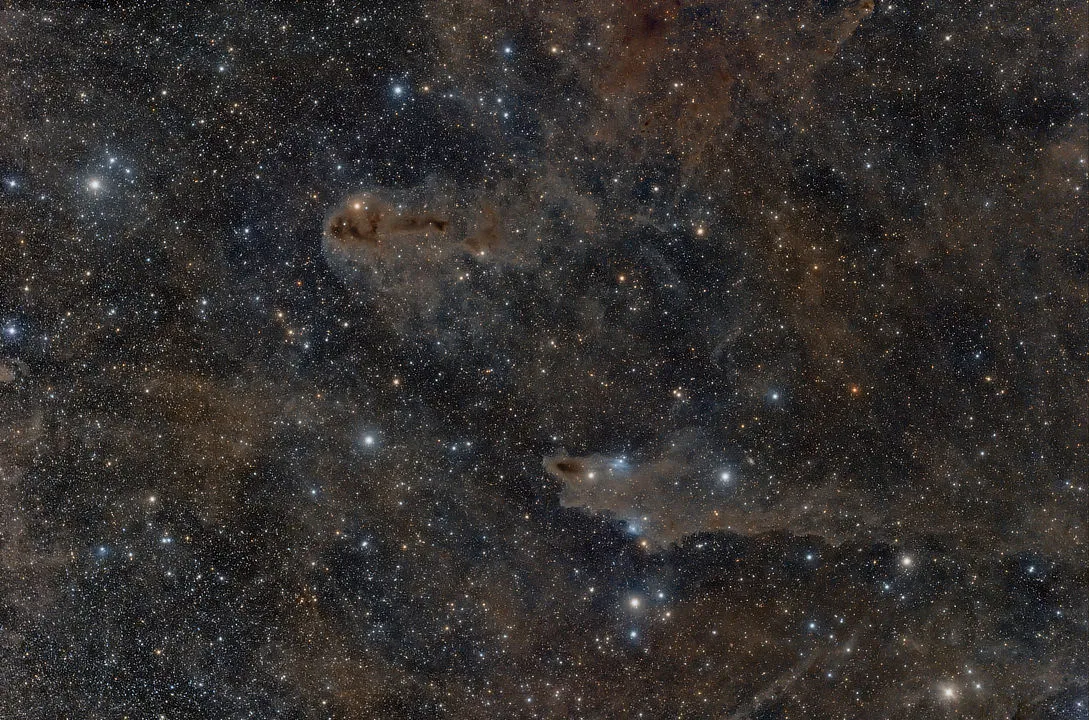
In images of starry regions of space, you often see large patches of inky blackness, leading you to - understandably - surmise that these regions are simply absent of stars.
What you're looking at is most likely a dark nebula, a vast cloud of cosmic dust so dense it blocks the visible light of background stars.
And dark nebulae have some of the coolest nicknames of the objects in space that we know of, such as the Coalsack Nebula, the Snake Nebula and the Horsehead Nebula.
A lot of dark nebulae are named after Edward Emerson Barnard, the American astronomer who published the Barnard Catalogue in 1919, listing many dark nebulae.
These objects are named using the 'Barnard' designation followed by a number.
Dark nebulae are irregular in shape and look like creepy cosmic objects, but they're actually packed full of the ingredients for new stars to be born.
Infrared astronomy enables us to peer through these dense dusty nebulae and observe the newborn stars within.
Type Ia supernovae
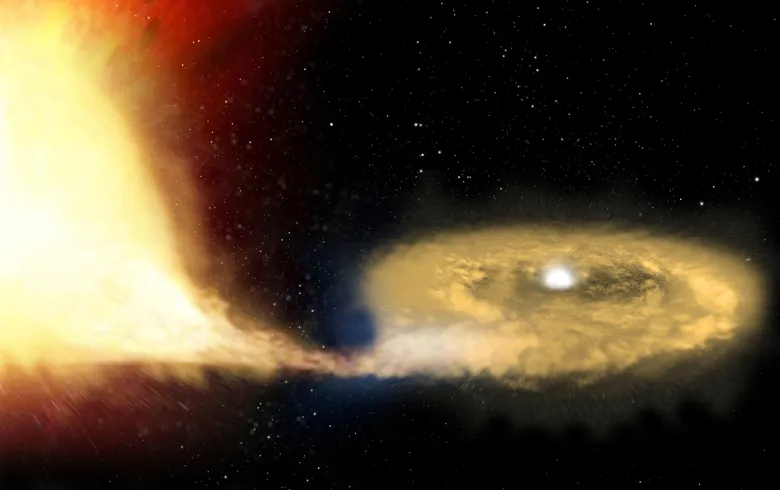
Really big stars end their lives in a violent explosion known as a 'supernova'.
These occur as a result of the delicate balance between the star's gravity trying to make a it collapse in on itself and the nuclear fusion exerting outward pressure.
As the hydrogen fuel gets used up, the star gets denser and denser, until the core collapses in on itself and results in a huge stellar explosion.
Yet there are different types of supernova.
Type Ia supernovae are caused when smaller stars get locked into a tight binary pair with a smaller white dwarf star.
The white dwarf grabs material from its neighbour until it gets massive enough to cause a supernova explosion.
And because the explosion’s brightness is related to the mass of the star, Type Ia supernovae always have the same luminosity.
This means astronomers can observe how luminous they appear, compare it to how luminous they actually are, and use this as a method of measuring distance in space.
Weird exoplanets

Many of us like to complain about the weather – it’s always too hot or too cold or too wet. But really, we just ought to be glad we live on Earth.
Because conditions on other planets really ARE horrible. There are so many weird exoplanets that we know of, and some of them are among the coolest things in space that we know of.
Take HD 189773b, for instance – a so-called ‘hot Jupiter’ exoplanet that lies just 64 lightyears away.
HD 189773b might look like a pretty blue marble, but it’s not somewhere you’d choose to go on holiday.
For starters, its atmosphere has a temperature of 1,300°C. Then there are the 8,700 km/h winds to contend with.
But the clincher is the rain. On Earth, ‘rain’ means droplets of water.
On HD 189773b, where the atmosphere contains a lot of silicate, rain means flying shards of glass.
And then there’s KELT-9b, whose atmosphere is so hot – 4,300°C – that it contains huge amounts of vaporised iron.
Or WASP-12b, which gets bombarded with so much radiation that it’s slowly falling apart.
It all puts that thunderstorm last Tuesday into perspective, doesn’t it?
Veil remnant

One of the coolest things in space has to be the remnants of an exploded star.
Once upon a time – around 10,000-20,000 years ago – there was a star in the constellation of Cygnus.
And it exploded, in a supernova that, as seen from Earth, would have been brighter than Venus.
Today, all that remains of that star is a ring of debris – dust, oxygen, sulphur and hydrogen – known as the Cygnus Loop. And the parts of that loop which are visible are called the Veil Nebula.
Supernova remnants aren’t an uncommon phenomenon in space, but what’s particularly impressive about the Veil Nebula is its sheer size.
It measures around 130 lightyears across. For comparison’s sake, the nearest star to Earth (other than the Sun), Proxima Centauri, is only 4.25 lightyears away, and it would still take you 950 million years to walk there.
First discovered by the famous astronomer William Herschel on 5 September 1784, the nebula is so large, in fact, that parts of it have their own names.
Its three main sections are known as the Western Veil, the Eastern Veil and Pickering’s Triangle. But those sections in turn contain multiple named objects – the Eastern Veil, for instance, comprises NGC 6992, NGC 6995 and IC 1340 .
That’s because, in case we haven’t stressed this enough, the Veil Nebula is HUGE.
Dark matter
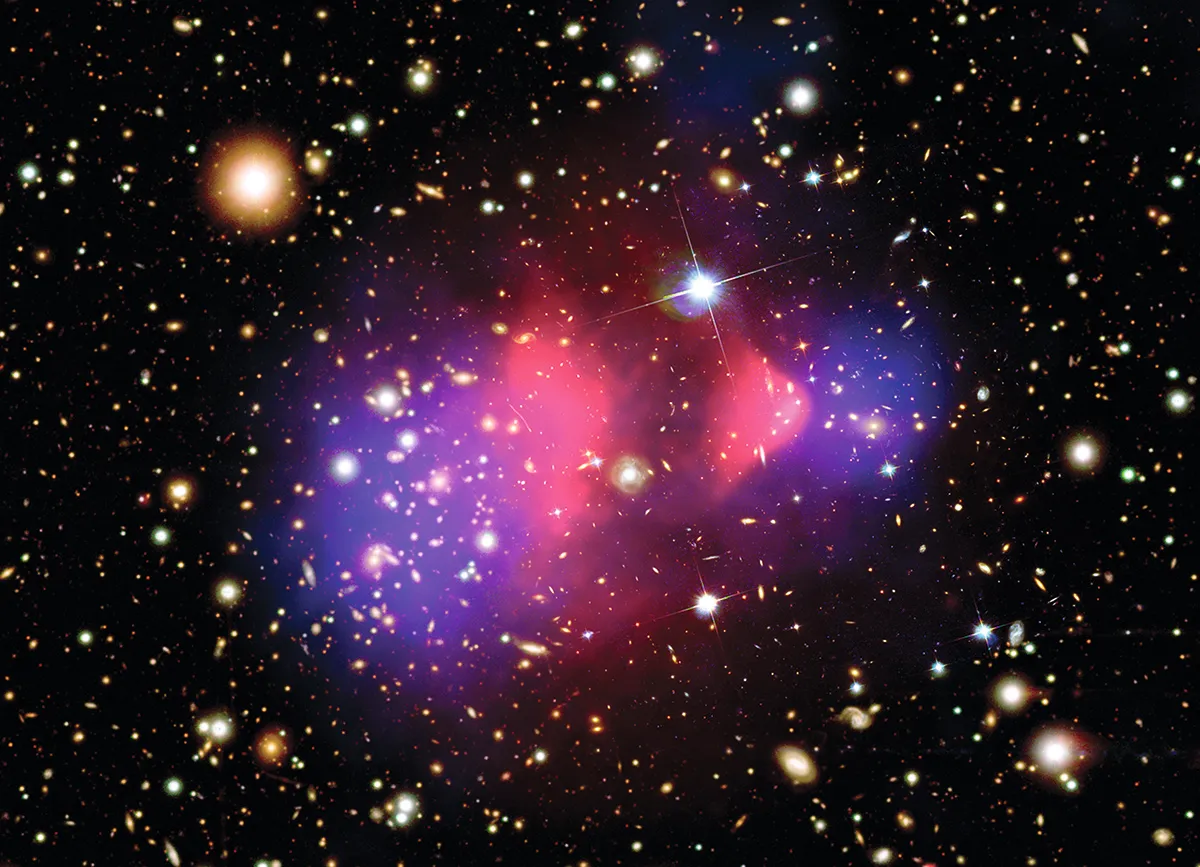
What is dark matter? The simple answer to that is: no one knows. But we know it’s there… and we also know that it actually makes up about 85% of the mass of the Universe.
That’s right: you could add up the mass of every star and planet in the entire Universe, and it would still be only a fraction of the mass represented by this mysterious substance that no one has ever directly observed.
We know dark matter has to be there simply because, if Einstein’s General Theory of Relativity is correct, if gravity works the way we think it does, then the motions and structures of galaxies simply don’t make sense – unless there’s a LOT more mass present than we can see.
We also know that dark matter can mostly be found in clumps, just like ordinary matter. That is, there’s lots of it in galaxies, and not much in intergalactic space.
There are many theories about what dark matter may consist of, most of them suggesting some kind of supermassive subatomic particle.
These ‘dark matter candidates’ have some pretty cool names, too. There are dark photons, gravitinos, Q-balls and – our favourite – WIMPzillas.
But the bottom line is, no one actually knows if any of these particles really exists, because the nature of dark matter remains one of the greatest mysteries in science.
Dark energy

Since the Big Bang, when everything - even time itself - came into existence, the Universe has been expanding.
So, naturally enough, we would expect that eventually the expansion of the Universe will slow down, right?
Well, it turns out that the expansion of the Universe is not slowing down. In fact, it's speeding up, and no-one can definitively say why this is happening.
Space is expanding faster and faster, like some sort of anti-gravity pushing galaxies farther and farther away from each other.
Astronomers know this by observing distant galaxies and a phenomenon known as 'redshift'.
Light from distant galaxies arrives at our telescopes on Earth with a longer (redder) wavelength, because the very space that light has been travelling through has been expanding.
This stretches the galactic light and provides scientists with light travel times, which can be used to determine the expansion of the Universe.
The name given to this mysterious force that's accelerating the expansion of the Universe is 'dark energy'.
As one of the biggest mysteries in the Universe, dark energy has to be one of the coolest things in space.
Haumea, the rugby ball dwarf planet

There are currently 5 objects in our Solar System classified as 'dwarf planets', and one of the coolest has to be Haumea.
This rugby ball-shaped dwarf planet is about the same size as fellow dwarf planet Pluto and is one of the fastest-spinning objects in our Solar System.
Haumea is located in the Kuiper Belt on the edge of the Solar System, and is so far away from the Sun that it takes 285 Earth years to orbit.
It spins so fast it completes one rotation every 4 hours, and it's this incredibly fast spin that gives Haumea its elongated shape.
Haumea even has two moons, and rings, making it the first known ringed Kuiper Belt object.
Planetary nebulae
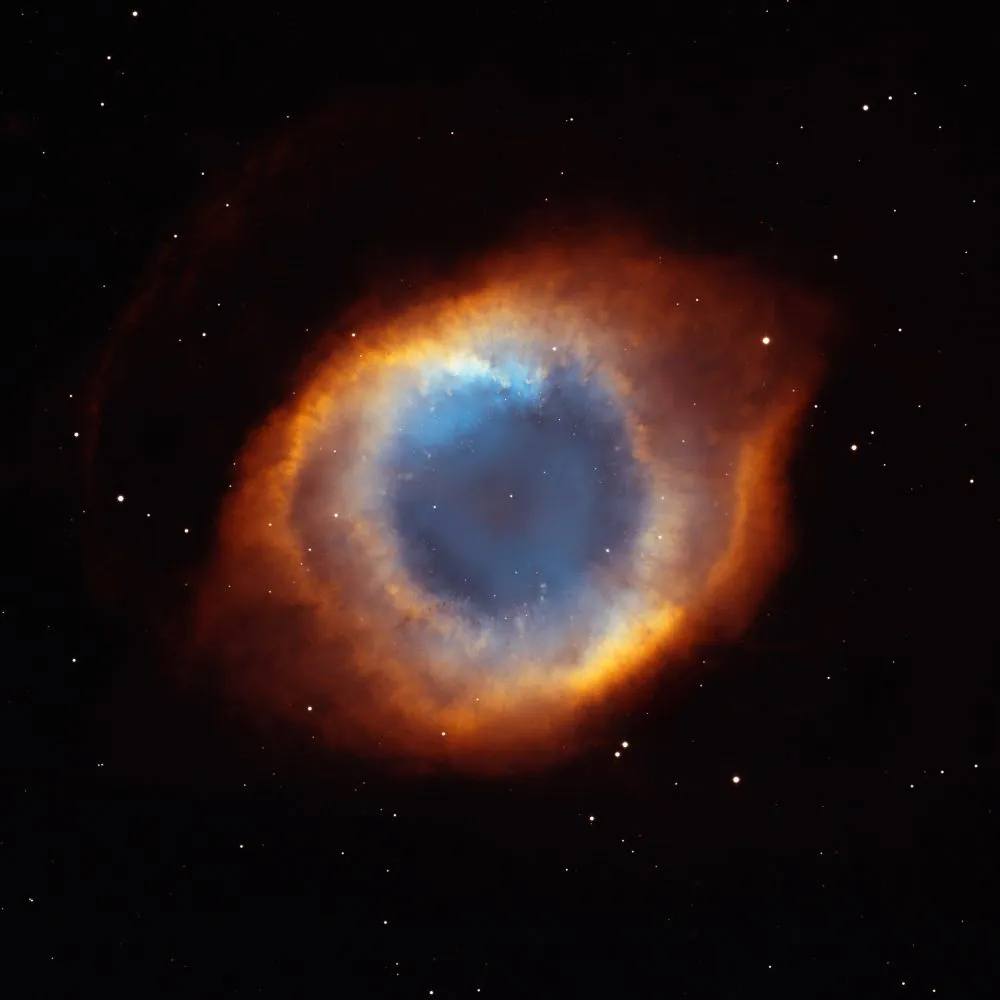
You may have heard of a nebula: those glowing cosmic clouds that are sometimes caused by vibrant, newborn stars illuminating the dusty pockets of space from which they were born.
Planetary nebulae are a specific type of nebula and make for some of the most beautiful cosmic objects we can observe.
And yet there is a melancholy to their beauty. They're formed during the final stages of a star's life, as instability at the star's core causes it to shed its outer layers into space.
This stellar material interacts with surrounding material, creating beautiful, puffed-out objects that are often spherical in shape (hence their name 'planetary nebulae').
Perhaps planetary nebulae are among the saddest things in space, rather than the coolest, but their 'wow' factor lies within their beauty, as they can produce all manner of wonderful shapes.
There are planetary nebulae that look like hourglasses and butterflies and, as we have seen, boomerangs.
These beautiful objects are some of the coolest-looking things we know of in the Universe.
Boötes Void

Space is, generally, packed with stars. But there are parts of it that aren’t.
Most of the regions that appear dark, as seen from Earth, are actually dark nebulae (see above). But when space-based telescopes peer further out into the cosmos, there are also genuine voids: huge regions of space where there is very little matter of any kind at all.
One of the first to be discovered was Böotes Void, which was first observed in 1981. Lying 700 million lightyears from Earth in the constellation of Böotes, it was for a long time the largest void we knew about.
Since then, though, we’ve learned that such voids are quite common: in fact, they’re an essential component of the structure of our Universe.
The Universe, scientists now believe, consists of regions where there is lots of matter, and regions where there is very little. Stars and planets gather together in galaxies, galaxies gather together in clusters, clusters gather together in superclusters, and superclusters form huge strands called galaxy filaments.
All those galaxy filaments form a kind of web or mesh – the cosmic web, in fact – that essentially makes up the structure of our Universe. And the ‘gaps’ in that mesh are what we call voids.
That’s not to say there’s no matter there at all. The Böotes Void, for instance, does contain around 60 galaxies. It’s just that, anywhere else in space, we’d expect it to contain over 2,000.
In recent years, much larger voids have been discovered. At 330 million lightyears across, Böotes Void is pretty darned big, but that’s nothing compared to, say, the LOWZ North 13788 void, which is nearly three BILLION lightyears across.
Still, we might not even know about LOWZ North 13788 void if we hadn’t discovered the Böotes Void first.
Planets with two Suns
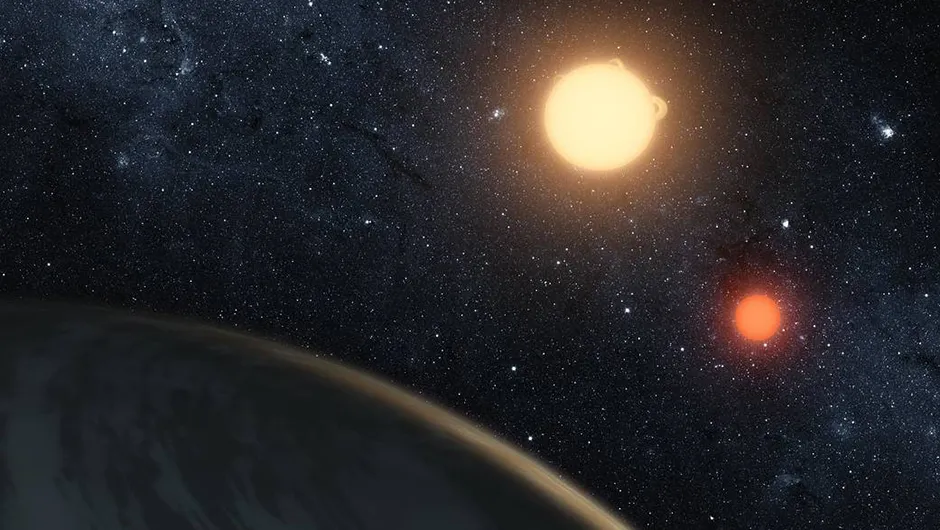
One of the coolest things in space is a planet with two suns, right?
There’s one very famous planet with two suns. It’s called Tatooine, and it’s in a galaxy far, far away.
The problem is, Tatooine is also entirely imaginary. It was made up by George Lucas for the Star Wars films, and at a time when the only planets we knew of were those in our own Solar System, it seemed like a pretty wild idea.
Since then, though, we’ve started discovering exoplanets – around 5,600 of them so far – and it turns out that planets with two suns do actually exist.
The scientific name for such planets is ‘circumbinary planets’, because in all cases they orbit a pair of binary stars – that is, two stars which are locked together by gravity and orbit around each other.
There are over 100,000 known binary stars, so perhaps we shouldn’t be surprised that some of them have planets in orbit around them.
The first circumbinary planet discovered was found orbiting the binary star system PSR B1620−26 in 1993, although its planetary status wasn’t confirmed until 2000.
Since then, astronomers have confirmed the existence of around 20 more circumbinary planets, with most of them detected by the Kepler Space Telescope.
The most famous planet with two suns is probably Kepler-16b, but BEBOP-1c is another well-known circumbinary planet.
But given that Kepler studied only a small number of binary stars, it’s now believed that planets with two suns may in fact not be uncommon – whether in galaxies far, far away or in those right on our doorstep.
And, this also leads into a gravitational problem known as the three body problem in astronomy, whereby the behaviour of 3 bodies gravitationally interacting with each other is incredibly difficult to predict.
But that's a story for another day.
ʻOumuamua
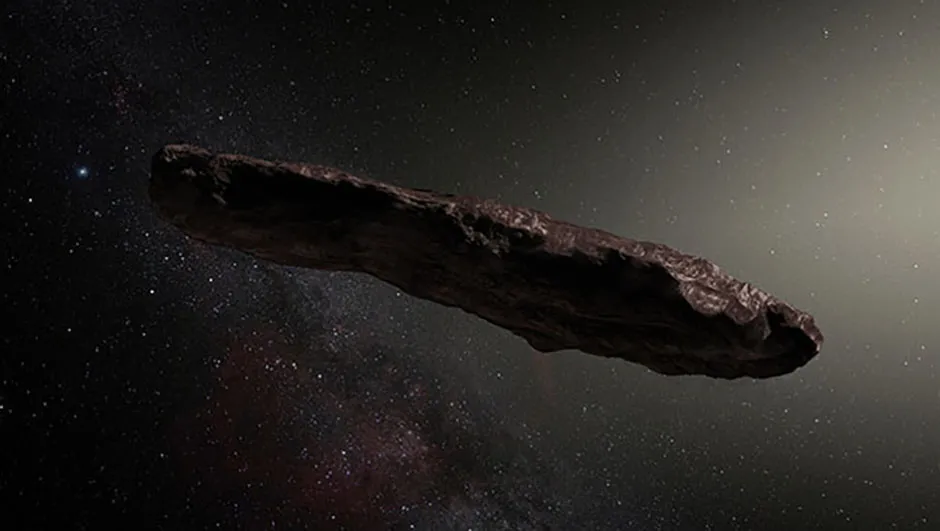
In 2017, something very exciting happened: the Solar System had its first known interstellar visitor, a cigar-shaped lump of rock that was give the name ʻOumuamua, which means (roughly) ‘first distant messenger’ in Hawaiian.
While scientists had long suggested that material from outside our own Solar System must occasionally pass through it, this was the first time (and remains the only time) that such an event was ever witnessed.
Even then, we caught only a fleeting glimpse of ʻOumuamua. After all, it’s a dark object, and a small one: ʻOumuamua is thought to measure between 100m and 1,000m long, and be no more than between 35m and 167m wide.
What’s more, it came no closer than 24 million kilometres (15 million miles) away from Earth, and was travelling at speeds of up to 87km/s (its actual speed varying due to the effect of the Sun’s gravity).
ʻOumuamua wasn’t, therefore, a visible object – we only know it came by at all thanks to observations from some of the world’s largest telescopes, and even then it showed up only as a ‘blip’ in the data.
As a result, we still don’t know a huge amount about it.
Its shape, for instance, is a matter for debate, because some scientists believe it may be disc-shaped rather than cigar-like.
There have even been suggestions that it could have been a space probe, sent by a distant alien civilisation!
But even if it’s just a lump of rock, it’s still the first known interstellar visitor we’ve had – and that’s still pretty cool.
What do you think are the coolest things in space? Let us know by emailing contactus@skyatnightmagazine.com


